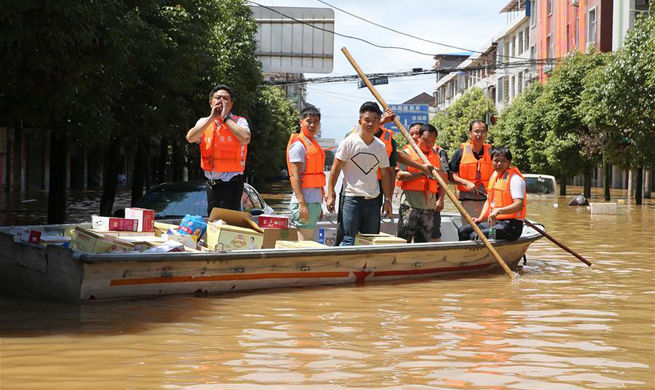GENEVA, July 3 (Xinhua) -- Libya has become the most common and also the deadliest route for refugees, forced by life-threatening insecurity and instability in the country, to cross the Mediterranean to reach Europe, a report by the UN refugee agency said on Monday.
The number of people crossing by sea from North Africa to southern Europe has increased in recent years, which is likely to continue in the foreseeable future.
They include refugees, asylum seekers, economic migrants, unaccompanied minors, environmental migrants, victims of trafficking and stranded migrants, among others, according the report from the United Nations High Commissioner for Refugees (UNHCR).
Of three main routes used by refugees and migrants to reach Europe -- the Western Mediterranean route, the Central Mediterranean route and the Eastern Mediterranean route -- Libya is now the most commonly used one, and also the deadliest, said the report.
Around half of those traveled to Libya believing they can find jobs there, but end up fleeing onward to Europe to escape life-threatening insecurity, instability, difficult economic conditions plus widespread exploitation and abuse.
UNCHR statistics show that more than 181,000 people arrived in Italy in 2016 by sea, out of which 90 percent traveled by boat from Libya.
And more deaths in the Mediterranean recorded in 2016 than ever before. Of the 5,096 refugees and migrants reported dead or missing at sea last year, 90 percent traveled along the sea route to Italy, amounting to one death for every 40 people crossing.
Meanwhile, nearly half of the refugees and migrants in Libya have little or no formal education, and only 16 percent have received vocational training or higher education. The vast majority of them were young men, aged 22 on average and traveling alone, it said.
The number of unaccompanied and separated children traveling alone is also rising, now representing some 14 percent of all arrivals in Europe via the Central Mediterranean route.
Despite Libya's strategic location, the refugees and migrants there are more often suffering from exploitation and abuse by human smuggling, criminal networks, armed groups, and criminal gangs, as a result of protracted conflict and instability in the country, noted the report.
The UNHCR is currently helping find durable solutions and establish legal pathways for refugees and asylum seekers, as an alternative to dangerous trips to Libya or over the Central Mediterranean Sea to Europe.


















